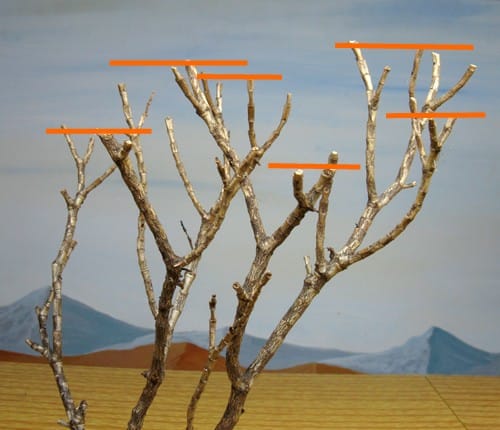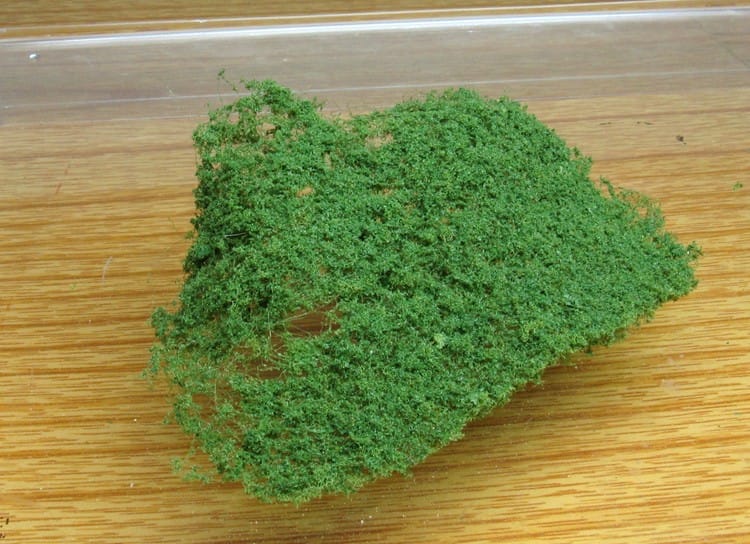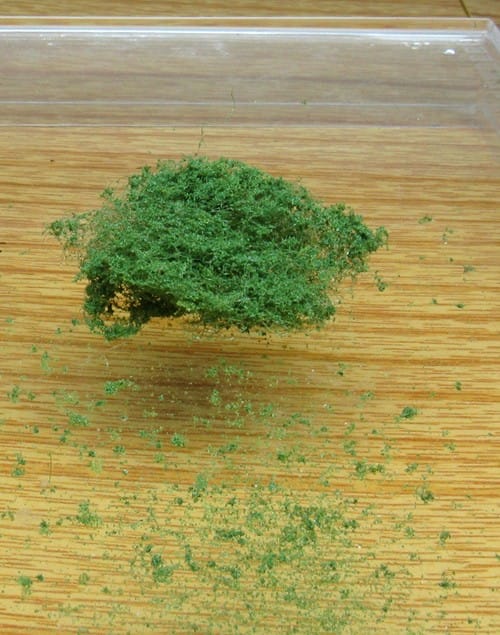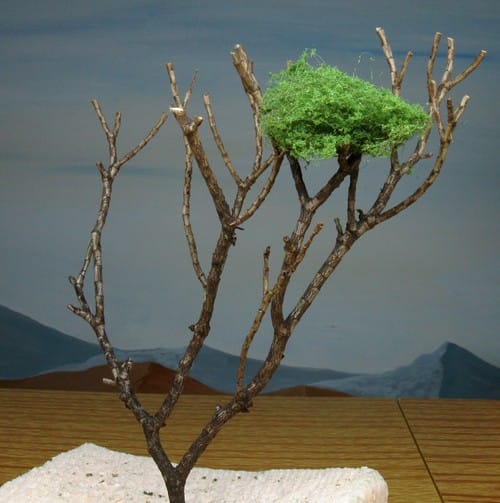Well, my big African terrain project is pretty much finished – just need to shoot some pictures of the finished boards, if the weather picks up a bit!
Meanwhile, a small diversion into trees…
The African savannah / veldt is lightly littered with hardy trees, and I wanted to include a few to give another dimension to the finished terrain.
I have lots of trees already - but I wanted to make some specifically African-looking trees: kind of tall and leggy, sparsely canopied, flat-topped - rather than the usual bushy temperate trees most of us know and love.
(And certainly not the bottle-brush trees most of us use for all wargaming purposes!

)
So I’ve made a few, and this is how:
To start with, the armature is a real twig. Specifically it’s a twig off a hebe bush from Malamute’s back garden – he kindly gave me a small bundle of these (I know what you’re thinking - his generosity knows no bounds

) They have just the right look for spindly-but-hardy trees from hot climes. Mexico? Africa? Hebe twigs will do the job.
After the first one disintegrated in my hands, I gave the others a generous coating of neat PVA each to stop them being quite so brittle. Seemed to work.
First step is to drill a fine hole up the tree from the foot of the ‘trunk’ and then to superglue in a short length of wire (the sort provided for ‘wire spears’) halfway into that hole, leaving an inch or so / 30mm - 40mm sticking out. This is because I’m going to spike my trees straight into the terrain to avoid unsightly bases, wobbling, getting knocked over in the course of play, etc etc.
(While you’re working on the tree, you can just spike it into any old spare offcut of foam… )


Next step is to snip the upper twigs down to size.
Basically, to form the canopy, I’m going to pop clumps of foliage on the ends of the upper twigs - so I want to make sure that the twigs are cut to height in groups of twos or threes. This means that each little clump of foliage can be glued on top of a spread of two or three twig ends.

For these African trees, instead of the usual ‘clump foliage’, I’m using Woodland Scenics ‘polyfiber’ foliage. I chose this because is gives a slightly sparser, 'lacier' appearance to the foliage.
I’ve gone for a medium green, because although the rest of the vegetation on the terrain is of the burnt grass / olive spectrum, looking at pictures of African trees, they seem to manage to be quite a deep green, even in the middle of the desert… I guess they have very deep roots.
The ‘polyfiber’ comes in a small folded sheet. Enough to make around 4 good sized trees. Here's a piece of the raw material...

You just tear it up into little irregular pieces and then pull each little piece around, until you've fluffed it into a suitable shape for your desired clump of foliage.
It's really quite easy to use (although as you’re pulling the material around, it’s slightly alarming to see how much flock drops off the fibrous carrier. But just scoop up any loose stuff, and we’ll come back to it later…

)

Next, put drops of superglue on a couple of likely twig ends, and pop your newly formed clump on top of them, so that the twig ends sink into the clump. Repeat this with 6 – 8 clumps per tree, until you have a fairly even / realistic looking spread of foliage.


Let the superglue dry for a while.
Once firmly stuck, use tweezers / nail scissors to slightly fray / break up / tease out each little clump, so that it doesn’t look too ‘balled’ and regular. Also trim off any stray 'hairs' sticking out...
Now spray the whole lot with a light drenching of Woodland Scenics ‘scenic cement’ (or just use well watered-down PVA). This fixes the whole lot once dried. I should point out that it doesn't fix it so that you could kick it round the room and it would survive - but it seals it just enough to help it hang together in the face of normal ‘in game’ wear and tear.
At this point, you can sprinkle back on any loose flock that fell off the foliage earlier.
It will now stick to the glue, and you can give it one further light spray over to fix it.
It should all dry nicely matt (although interestingly, the trunks on these ones haven't...

)

Just a point about spraying scenic cement – it’s useful stuff, not only because it helps to fix all your scatter material in place, but also because (on groundwork at least) it matts everything down nicely.
But beware, the official WS ‘scenic cement sprayer’ is not only ludicrously expensive for a plastic spray bottle, but it’s also rubbish at the job it’s intended for - far too crude. It saturates without any control, when what you need is a light misting…
So I’ve taken to using an empty
eau de toilette bottle, which provides exactly the right amount of spray and is much easier to control. And smells nice

Once dry, I’ve given the tree trunk a light drybrush with a pale grey-greeny colour, because the natural dark brown colour of the hebe just looked a bit wrong to me…

And there you have it: vaguely African-looking trees… (I hope

)

Next up, pictures of the full and finished layout
